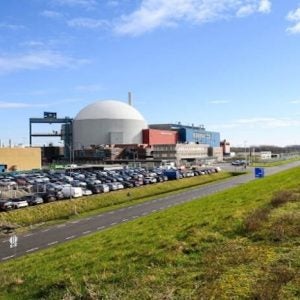Over the last few months, unfavourable economics have led to both the cancellation of new nuclear build projects and the decision to permanently close and decommission existing reactors.
Most recently, Dominion announced that it would shut and decommission its Kewaunee plant; a 556-megawatt single-unit pressurized water reactor in the US state of Wisconsin. Both Dominion and the US nuclear industry (via the Nuclear Energy Institute) were quick to defend the Kewaunee closure, blaming ‘unique circumstances’ and promising that it ‘does not reflect the nuclear industry in general.’
While the economics of nuclear in the Midwest may be unique, Dominion is not alone in facing plant-specific issues that could challenge long-term operation. And, as reactors get older they will inevitably become more likely to face economic challenges, with expensive modernization and upgrade projects to weigh-up.
Some 1600 km northeast of Kewaunee, Hydro-Québec, the Canadian operator of the 685 MW CANDU-600 reactor Gentilly 2, recently opted out of a $4.3 billion refurbishment project to extend operation for 30 years. It said that with unit costs expected to reach 12.3¢ per kilowatt-hour (including future spent fuel and decommissioning costs), the project could no longer be financially justified. Gentilly 2 is set to close on 28 December 2012.
Oyster Creek, a 645 MW boiling water reactor in New Jersey, faced a similar situation a couple of years back, again choosing early closure over a large, costly upgrade. Exelon confirmed in 2010 that Oyster Creek would close by 2019, ten years before its operating licence expires due to low market prices and high costs. The plant would have needed to install $800 million cooling towers to operate for longer, Exelon said. It is not unthinkable that the Oyster Creek could close before 2019 if other expensive upgrades are deemed necessary.
In Florida the 838 MW Crystal River 3 reactor operated by Duke Energy (formerly Progress Energy), has been offline for three years now because of containment concrete cracking. While a $1 billion repair plan has been drawn up, under the worst-case scenario costs could run to $3.5 billion and the project could take up to eight years to complete! Duke is still deciding whether to proceed.
There seem to be three common themes affecting the plants in this list. First, they are usually single-unit sites. Second, they are typically small-to-medium capacity reactors (less than 800 MW). Finally, some (such as Kewaunee) were purchased in the early 2000s by utilities hoping to take advantage of the ‘fleet approach’ and to build up assets in a different region of the United States.
Based on these characteristics, other plants that could find themselves in similar situations include Entergy’s Palisades in Michigan, Vermont Yankee in Vermont, Pilgrim in Massachusetts as well as NextEra’s Duane Arnold in Iowa.
According to Fitch Ratings, being a single-unit, merchant nuclear power plant, located outside of Dominion’s existing fleet footprint particularly hindered the economics of Kewaunee.
One potential option for reactors facing hard times could be hiring an established nuclear power plant operator in an effort to improve performance. Fort Calhoun, offline for over a year recovering from flooding and under special oversight from the NRC, recently signed-up the largest US nuclear operator Exelon to run that plant for up to 21 years. Cooper, another single-unit plant in Nebraska is also operated by another large utility: Entergy.
And now on to a final more forward-looking thought. If Dominion cannot find a buyer for an already-operating small nuclear power plant, what does this mean for small modular reactors? Often touted as a ‘game changer’ and as the future of nuclear power plants in the USA, building an SMR would surely be higher risk than taking over an existing unit, which has no design licensing, operator training, manufacturing or construction costs to consider. It appears that in a partially-deregulated electricity market, as in house buying, location is everything.
Author Info:
Caroline Peachey is assistant editor at Nuclear Engineering International






